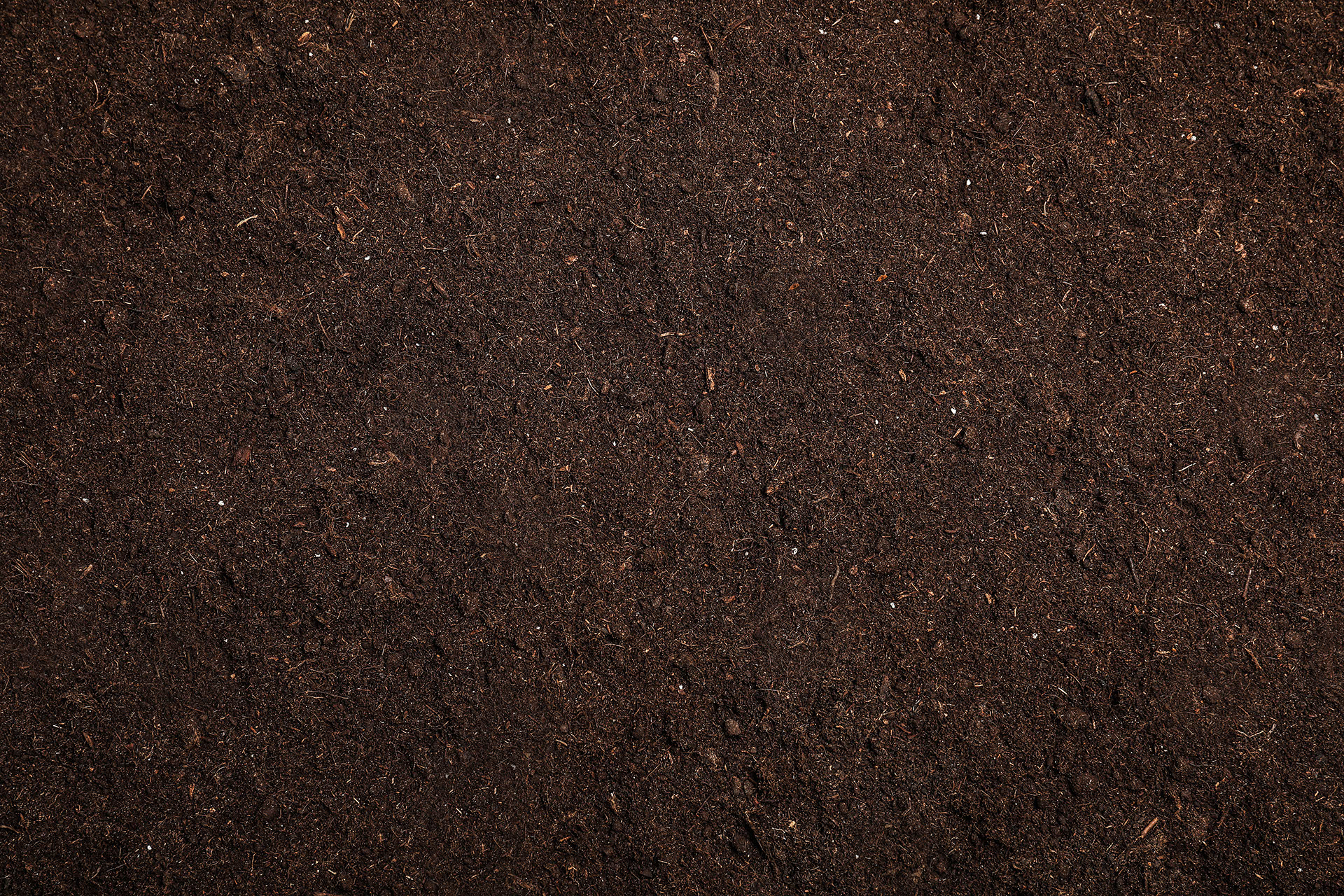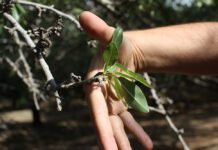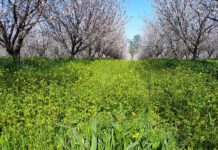As farmers, every time we attend another seminar on soils, we get the rundown on the soils chart: Sand v. Loam v. Clay. Thirty percent of “this” gives you “that.” Percolation models, clay lenses that perch water, sand streaks and grandpa’s “bitch” alkali flats are important to note. Eighty-five percent Whitney Mollic Hyploxeralfs of fan remnants from a back slope is great for my rock geek buddies that work for Geosyntech or Exxon Mobile, but without geoengineering, they are just pieces of information to most of us. What’s truly important to farmers is how quickly water and nutrients move through that soil.
You care most about those first 12 inches of soil around your roots. This is the easiest and most efficient part of our soils to manipulate and feed our trees. Of course, we need a soil test to see its constituents. Knowing how much calcium, magnesium, potassium, and sodium are present in soils and what forms they are in is critical to making a nutrition plan. Central Valley westside soils with very high magnesium levels are the toughest soils to manipulate. Magnesium is sticky. It’s a powerful little dynamo of a nutrient that just happens to be the central element in chlorophyll. It’s pretty important but difficult to get into your trees if your soils aren’t fertigated properly. Add in soil below 60-percent calcium and high pH, good luck getting gypsum to make a difference. Increase your clay and sodium content and you’ve got soils pulling very hard on nutrients compared to a roots’ osmotic potential. Sandy soils will have a much harder time holding potassium. Its smaller size and identical charge to sodium allow it to move deeper into your soil than calcium, magnesium and phosphorus. With nitrate’s negative charge, the same thing happens, deeper soil penetration more quickly.
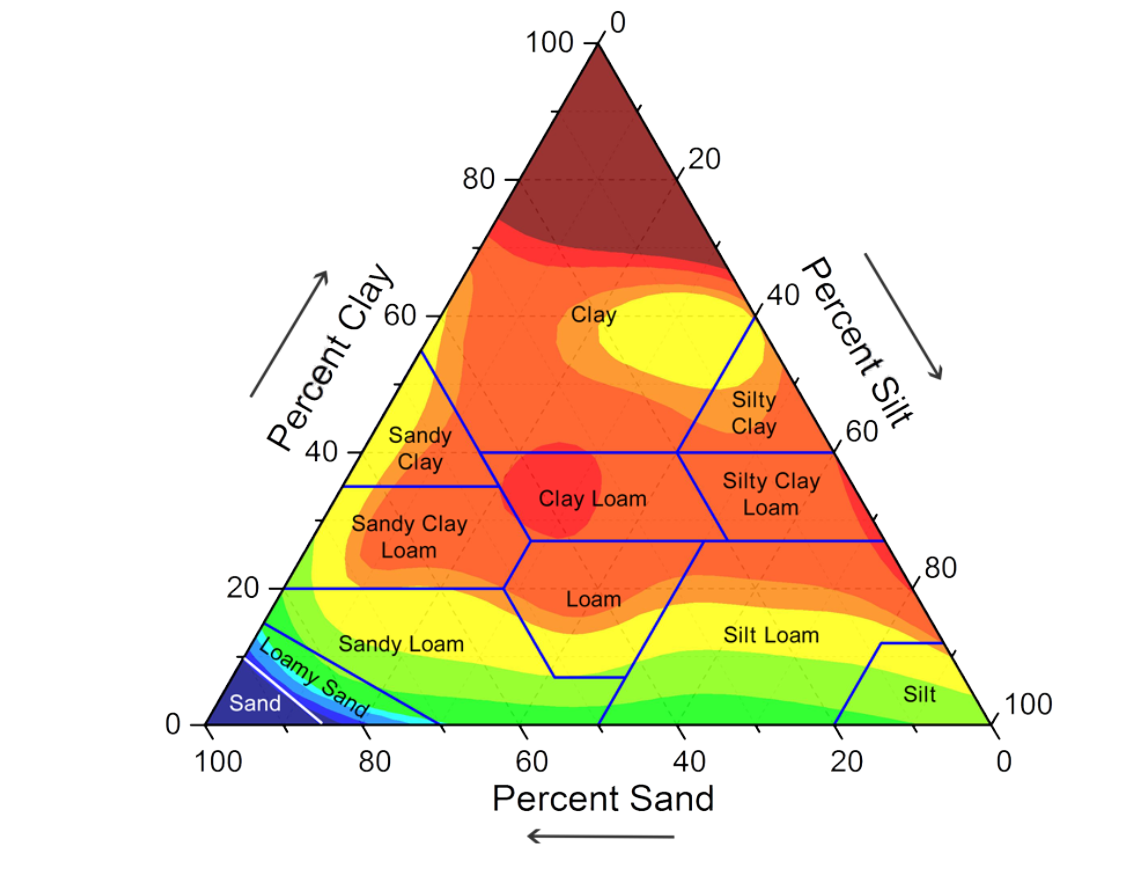
“Thanks Rich, you just went into everything I hate about soil seminars.” So, what’s the point? Track your water movement and timing. If you know you have sandy soil, you can’t hold nutrition in the root zone like a heavy clay ground, especially potassium. You have to adjust your irrigation schedule to shorter run times more often. Our pistachio trees are only going into sixth leaf, but on ground, with a range from 3 to 11 CEC (river sand to loamy sand) we’ve never run a summer set longer than 12 hours. However, I ran the water three times that week. In our efforts to manipulate the nutrition, we also ran nutrition in every set. More importantly, we tried to match tree nutrient demand to fertigation inputs. The trees needed P and K at that time and, of course, always need more calcium for new cell development and cell wall structure. Phosphorus and calcium are hard to deliver together in large quantities. K is difficult to hold in sandy ground. It’s important to alternate the two applications often and in smaller shots.
From what I can tell, “Herein lies the rub”: When I recommend this type of approach to the growers I consult for, they automatically think of the expense those nutrients cost on normal applications, so in turn, they think that budget will go through the roof. It is important to remind them to use less product each time. Give the trees a constant drink of essential nutrients matching demand. Today’s fertigation systems are allowing for a constant flow of nutrients and essential timing changes. Many can even be controlled from a cell phone. Safety factors are built in as well to avoid pressure changes, plugging, system interruptions and tank flushes.
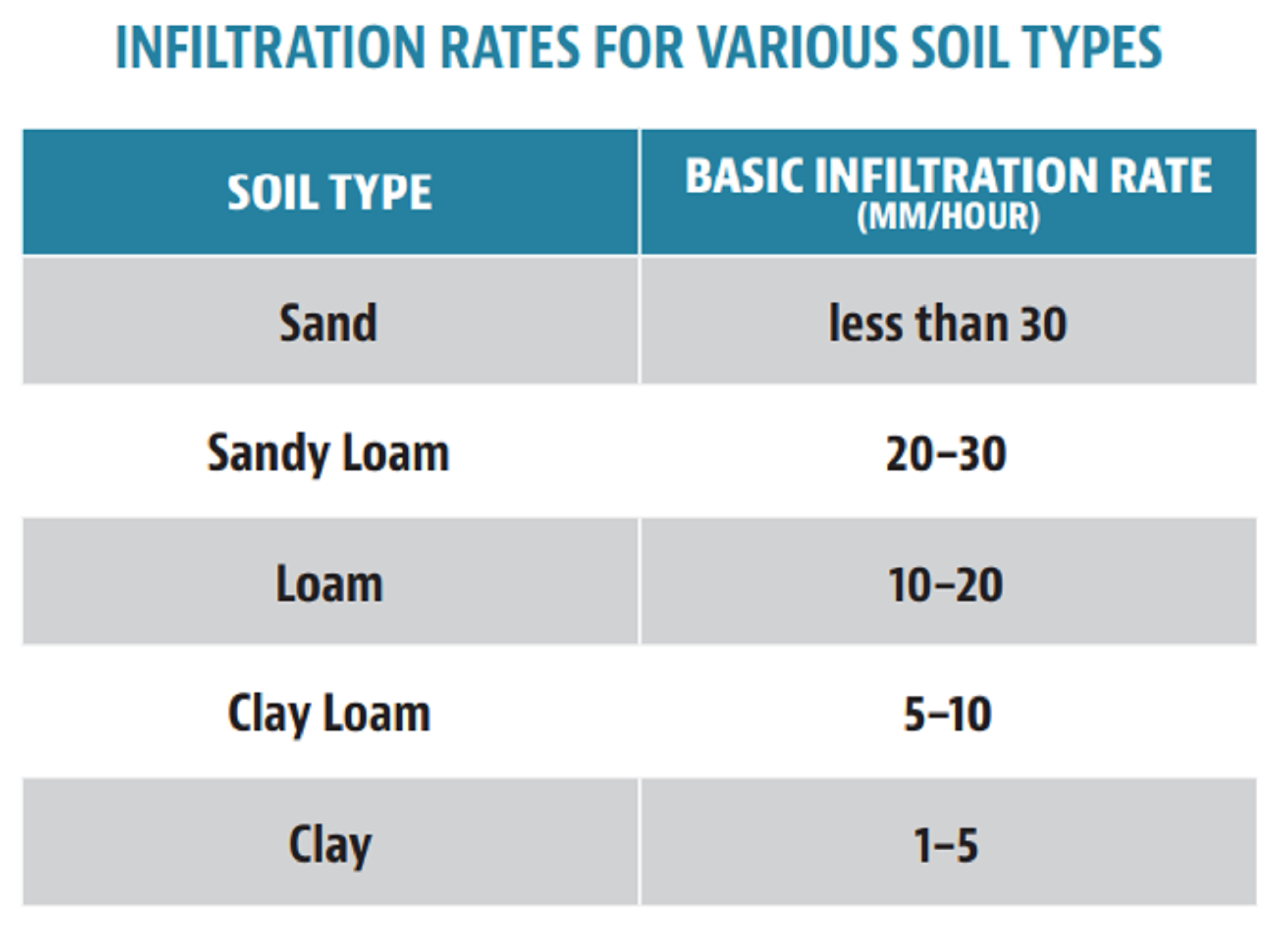
In heavy clay ground we can apply bigger nutrient shots without worrying about leaching, but need to manipulate our water treatment to keep pH and undesirables in check. Often, running water too long on heavy soils creates anaerobic conditions. Root rot issues and beneficial soil biology often gets overrun by the bad stuff. Knowing how far out the water expands and how quickly it infiltrates the top foot of soil is critical. Moisture sensors are very important for managing your water. From previous research we know that sandy ground has a more vertical component to the water infiltration pattern. Clay soils have a much squattier, more horizontal pattern. But remember, the roots grow where the moisture is, especially when we manage it well. We are still trying to get our nutrition to the feeder roots in the top foot of soil.
Another concern is deep moisture. I hear this often. Growers are always chasing that deep moisture. Using moisture sensors to monitor how quickly and how far water moves after an irrigation event will help you maintain that deeper moisture. Smaller shots more often will do the same. It still allows for ample water while not causing longer periods of anaerobic conditions. A more constant flow of soil moisture will also help keep the deep moisture from subbing up in longer periods between sets. Starting the season with smaller, more frequent shots will translate to keeping that deep moisture intact.
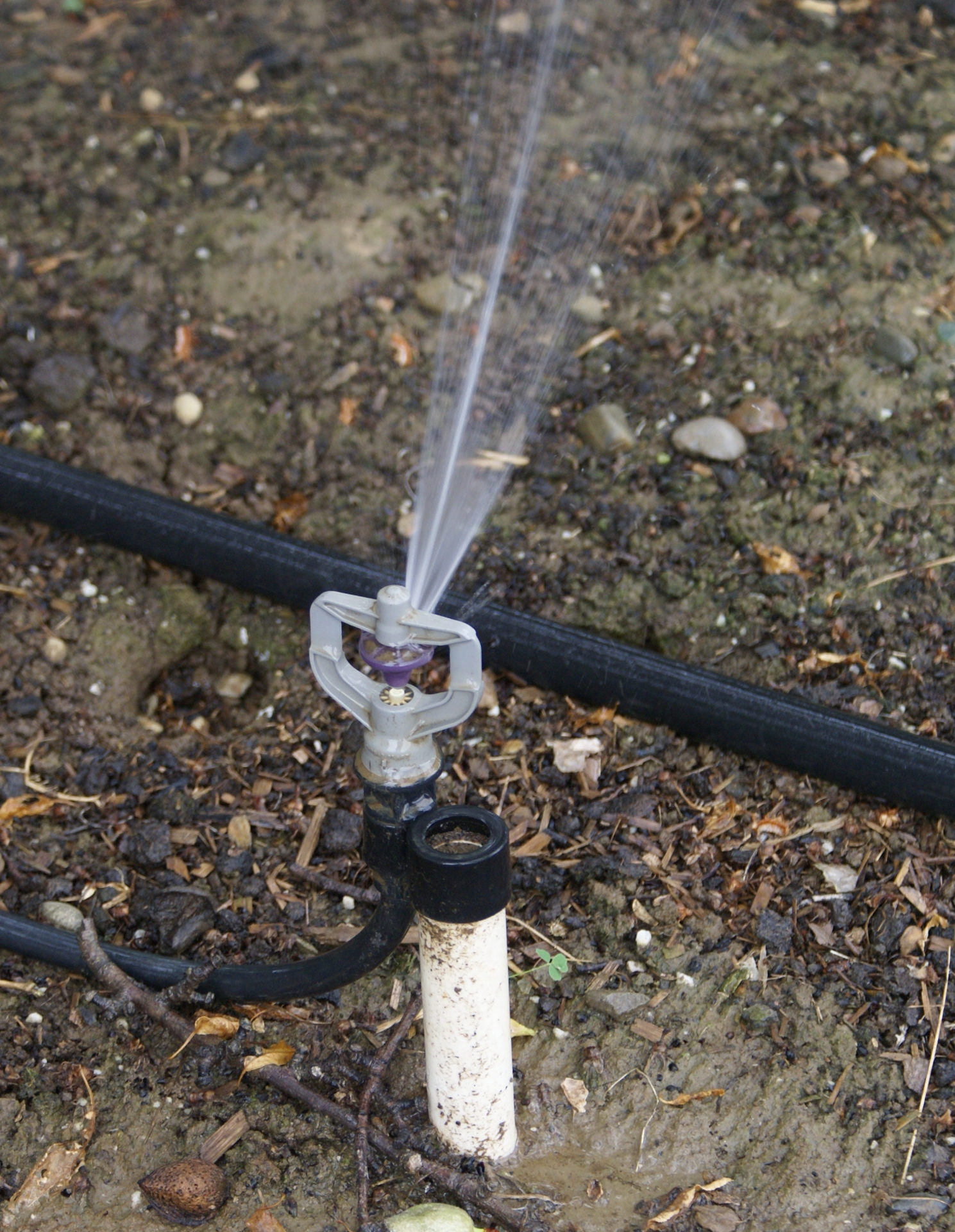
Knowing your soil types and its components will help you deliver the proper nutrients to your trees. Changing your approach can go a long way to improving yields. A tree can’t move, so as farmers, it’s our responsibility to get nutrition to the roots in amounts and forms pertinent to nutrient demand. Knowing how water moves through your soil will dial that in. As your operation grows and logistics become more difficult to micromanage your fertigation, an investment in new technology may quickly pay for itself. Keeping track of how your soil functions will not only keep us grounded, but let our trees know we are rooting for them!







